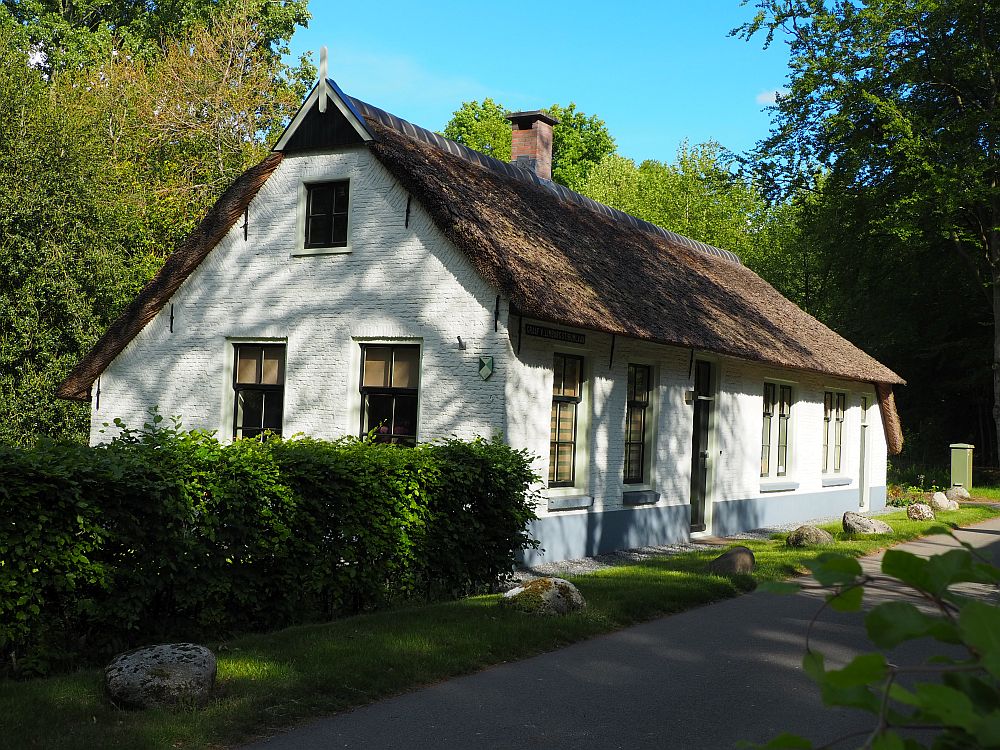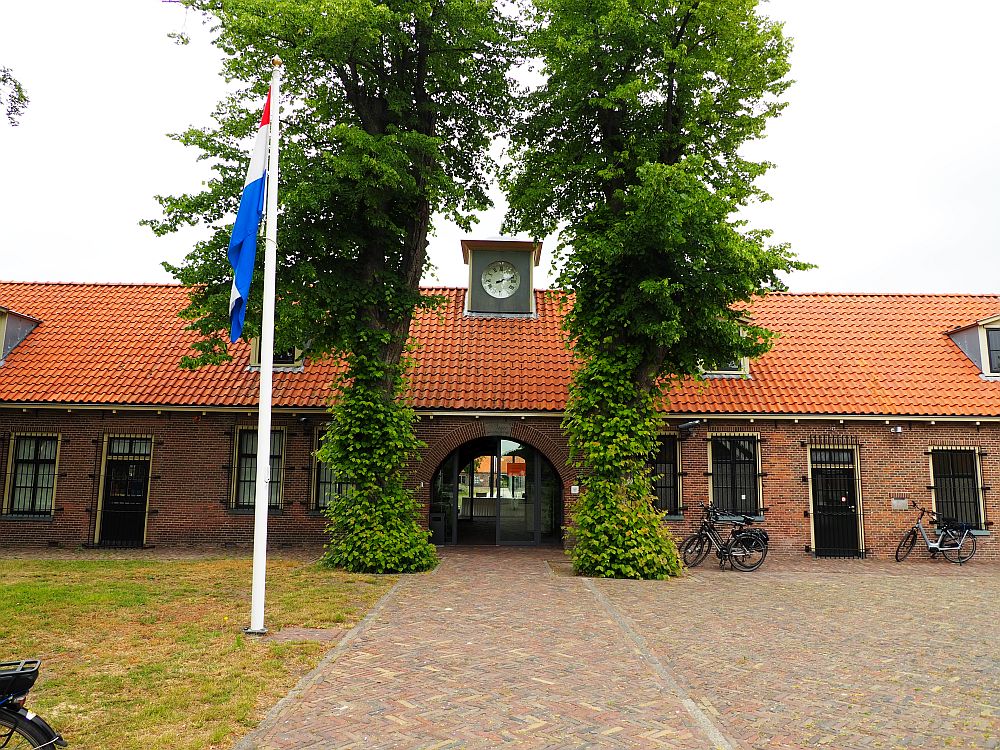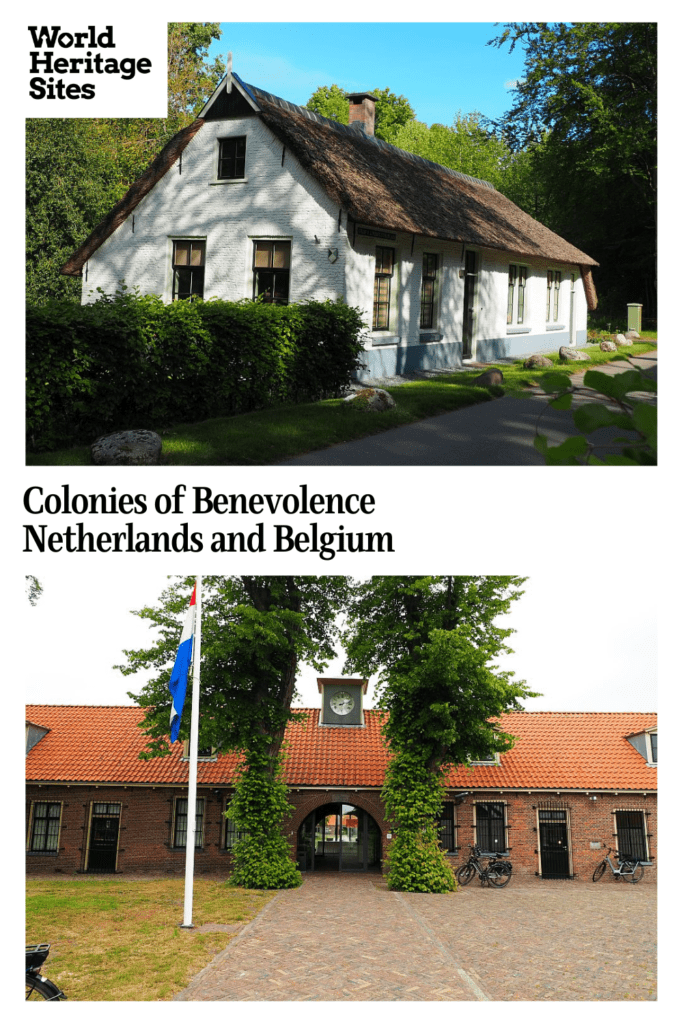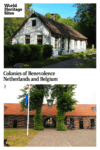Colonies of Benevolence
By Rachel Heller
What are the Colonies of Benevolence?
The Colonies of Benevolence are four villages that were founded by the Society of Benevolence in the 1800s as part of a planned effort to reduce urban poverty. The idea was to take poor people from the cities and relocate them to the countryside, giving them a home and a plot of land to farm. This physical work would, they believed, create a moral, ideal community, with industrious, self-reliant citizens.
Disclosure: This article contains affiliate links. If you click a link and make a purchase, we will receive a small commission. This will not affect your price.
The land they settled with these colonists was generally unused and considered unproductive, but the transformational effect on these ideal citizens would also be extended to transforming the land to productivity.

The four colonies in this group are Frederiksoord, Wilhelminaoord and Veenhuizen in the Netherlands and Wortel in Belgium.
The farms didn’t earn enough to be self-sustainable, so the colonies eventually started accepting government contracts to house orphans and later, homeless people, in dormitories, making them work in the fields to pay their way. Veenhuizen was founded as an “unfree” colony, housing these groups, who, unlike the free settlers, had no choice and lived under guard. Wortel was a free colony which became unfree.
Why are the Colonies of Benevolence a UNESCO World Heritage site?
The Colonies of Benevolence represent an experiment in Enlightenment thinking, an attempt to realize Utopian ideals. From the UNESCO website: “As such, the Colonies of Benevolence pioneered the domestic colony model, attracting considerable international attention. For more than a century, they exerted an influence on various types of custodial care in Western Europe and beyond.”
What can you expect on a visit to a Colony of Benevolence?
Frederiksoord has an interesting museum explaining the philosophy behind the Colonies of Benevolence as well as looking at life in the colony. The pretty houses built for employees and workers still stand in neat rows on a grid pattern of roads. The church and the post office still stand as well. Many visitors enjoy either walking or bicycling along the roads of the colony.
Wilheminaoord is similar to Frederiksoord in appearance and also has a small exhibition on its history.
Wortel, on the Dutch-Belgian border, also still has a number of the original agricultural buildings and dormitories for the homeless people incarcerated there.
Veenhuizen, on the other hand, is quite different, because it was a penal colony, albeit housing the prisoners in very pretty buildings. The National Prison Museum gives a clear idea of what life was like for the inhabitants.

Are the Colonies of Benevolence worth visiting?
Beyond being interesting in terms of the utopian ideals that led to the creation of these villages, they’re simply very pretty. For anyone who would enjoy a stroll or a bike ride in a place where the human-made and the natural coexist beautifully, Frederiksoord, Wilhelminaoord and Wortel are worth a visit. Otherwise, they’re worth a side trip if you happen to be in the neighborhood of one of them.
Veenhuizen is worth a visit if prisons interest you, and their museum is particularly child-friendly.
Tips for visiting the Colonies of Benevolence
Wear good walking shoes and/or rent a bike to enjoy a colony.
Frederiksoord and Wilhelminaoord are right next to each other, so it’s easy to visit both, especially by bike.
Click on the following map to find accommodations near Frederiksoord and Wilhelminaoord:
Where are the Colonies of Benevolence?
- Frederiksoord: Majoor van Swietenlaan 28, Frederiksoord
- Wilhelminaoord: J.H. van Woldastraat 3, Wilhelminaoord
- Wortel: Kolonie 41, Wortel
- National Prison Museum: Oude Gracht 1, Veenhuizen
None of these towns has a train station, making reaching them by public transportation a multi-step process from any larger cities in the area. Driving is recommended.
- Frederiksoord and Wilhelminaoord are in Drenthe province, about 25 minutes by car from Meppel.
- Veenhuizen is also in Drenthe province, about 20 minutes from Assen and 45 minutes from Groningen.
- Wortel is about 45 minutes from Antwerpen in Belgium and 30 minutes from Breda in the Netherlands.

For more information about the Colonies of Benevolence, their opening hours and admission fees, see their official website. It provides information on these four UNESCO-designated sites as well as others that were not included in the designation.
Have you been to any of the Colonies of Benevolence that are part of this UNESCO site? If so, do you have any additional information or advice about it? Please add your comments below!

